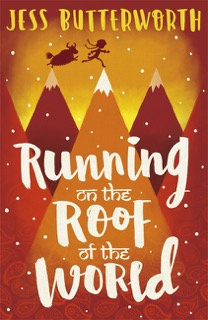As a child I often imagined I was on adventures in the wilderness without my parents in tow. My grandparents were avid David Attenborough fans and I used to watch wildlife documentaries with them before acting the scenes out: pretending I was climbing to the top of a rainforest; rescuing a pelican from a cliff or swimming with pink dolphins in an alpine lake. I wanted to inhabit an outside world: interacting with nature and experiencing my environment.

The literature I surrounded myself with reflected this desire and books such as Michael Morpurgo’s Kensuke’s Kingdom; The Secret Garden by Frances Hodgson Burnett and Kipling’s Jungle Book, swept me away to faraway lands or on adventures in new settings. My other favourites included Louis Sachar’s Holes and The Incredible Journey by Sheila Burnford. These stories allowed me to experience being in the wilderness from the safety of my home. These are also the things I consider when I’m writing: what are the places I want to spend time in when I write, and the types of landscape I want to create for my characters to interact with?
My first two novels are set in the Himalayas. I spent much of my childhood in India. My father was a trek leader and we lived on a remote foothill above Dharamsala, where the Dalai Lama and a Tibetan community in exile is settled. My mother’s family lived in London, where I was born. Growing up, I would always write about the Himalayas when I was in the UK and missing the mountains or my dad and grandparents who still lived there.
Although Running on the Roof of the World is fiction, it is inspired by a journey that tens of thousands of Tibetans have braved. I wanted to write a story that is relevant to today and grounded in events, places and communities I care about deeply. Getting the setting right was an integral part of writing the story.
Here are my top tips for creating a successful setting for your story.
1. If it’s set in a real place, research it.
Watch videos. Read nonfiction and fiction books. Look at photographs and videos. Talk to people who live there. For each novel, I filled a scrapbook with photos, notes, newspaper cuttings and anything else that related to the place in some way. This also functioned as a collection of material that was useful as idea prompts.
If you’re able to visit the setting, do. I was lucky to be able to return to the Himalayas whilst writing the book. There, I interviewed people, trekked into the mountains, attended Dalai Lama teachings and had experiences that would form the heart of the story. I also recorded video snippets to capture moments and sounds, and filled journals that would allow me to immerse myself in the place when I was back at my desk, miles away from it.
Even if you’re writing fantasy and call the setting something else, physically anchoring some aspects of a story in an actual place can give it a reality.

2. Use setting to create atmosphere
The time of day can have huge impacts on a scene. I use night scenes to increase tension and I usually have moments of rest and lightness alongside sunsets, sunrises or starry skies.
3. Use all the senses
These are the details that really make a place come to life. The sounds, smells, tastes, sights and feel of a setting. I love including scenes where characters are eating or discussing their favourite food.
4. Does the setting form part of the conflict?
In Running on the Roof of the World, the mountains become part of the plot as they form a gigantic barrier that must somehow be crossed.
5. Use setting to reveal character
Does your character have any specialist knowledge? Are they able to name the types of trees around them? Or do they love birds, cars, or graffiti? What do they notice in their surroundings? Do they see things positively or negatively depending on their mood?
6. Balance description with pace
Decide which details of the setting to include. Describing every bit of the setting around a protagonist slows the story, but using too little detail means your reader won’t be able to picture the scene. A great way to do this is to weave the setting into the action.
7. The power of naming things
Bring things into existence by naming them. An important tree in my book became the vulture tree and even the soldiers were given nicknames.
8. Use specific details
Give readers a rush of experience by describing specific details they can really imagine. If a bug flies past is it a ladybird or a stink bug?
Happy writing!
Jess Butterworth is the author of Running on the Roof of the World, out now with Orion. A second novel, When the Mountains Roared is due to be published in April 2018. Discover more about the book on Jess’s website or follow her on Twitter.
Comments